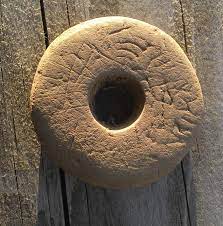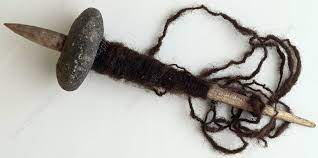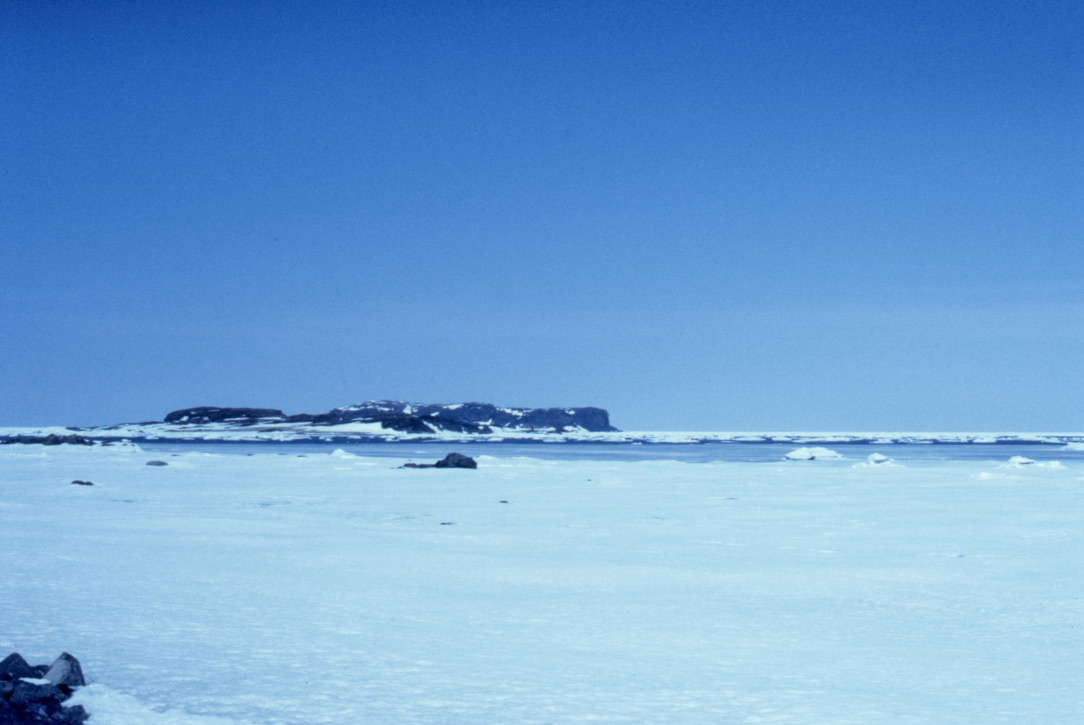EPISODE 568 GEORGE DECKER — AND THE DISCOVERY OF L’ANSE AUX MEADOWS












alan skeoch
april 6, 2022
DO YOU HAVE PLANS FOR A SUMMER VACATION?

IF, after you read this Episode, you decide to visit L’Anse Aux Meadows, be ready for a wind swept, cold, rather hostile experience.
Wonderful if you have imagination and love discovery. Terrible, if you expect crowds of people and Tim Horton’s or Starbucks coffee shops.
And getting there…getting to the northern tip of Newfoundland, is an adventure in itself. Just remember the comforts of urban life
will be absent. If, however, you long for a sense of adventure, then this is a place you must visit at least once in your life. Not many
people will believe me and those longing for the soft life will be utterly and completely disappointed.
I was lucky enough to have shaken the hand of George Decker.

George Decker as we met him at L’Anse aux Meadows — The man who showed Anne Stine Ingsted ’some old Indian mounds’ that
turned out to be the most important historical site in North America.
GEORGE DECKER
Very few people live on this windswept barren tip of Newfoundland. Devoid of just about everything. Hard to believe
it is the most significant historical site in North America according to UNESCO. IT was here that we met George Decker, the
man who directed the Ingsted’s to a few mounds of earth “where I think some Indians once lived.” Not Indians of course.
This site, L’Anse aux Meadows, was where a Viking open decked sailing ship landed sometime between 950 AD and 1050 AD
How do we know that?


HOW DO WE KNOW VIKINGS LANDED HERE?

Viking pins that held their clothes in place. This pin, found in Newfoundland in 1960, was the tiniest proof the Vikings
landed at L’Anse aux Meadows in1,000 AD. There were other clues.
Several other clues. Charcoal bits could be Carbon14 dated with accuracy. So around 1,000 AD people had fire pits here. Why? To keep
warm of course but also to smelt iron. The swamp around the site contained lots of bog iron…. precipitate of iron rich water. Bog iron
could be smelted by fire into iron. Not much iron but enough to repair a wooden ship or enough iron to be pounded into weapons i suppose.
When the Ingsted’s carefully excavated the site they found a few other things. Small things. So small that most of us would
ignore them. And it is these tiny things that conclusively proved this was a place where Vikings lived long long ago. Almost
500 years before Christopher Columbus landed in the West Indies
Let me just talk about one of these discoveries. A pice of stone. Round. with a hole in the centre. Small…fits comfortably in
the palm of a human hand with lots of flesh left over. It is called a spindle whorl. A key piece used in the making of woollen thread…in the ultimate manufacture
of cloth. Or the repairing of cloth. The stone will twist .. will spin … if held correctly. I am not sure how but have been assured
it is a simple thing to do. These stones can be traced back to Norway. Artefacts that could be dated around 1,000 A.D.
This spindle whorl had another meaning. Women used spindle whorls. Not men. Making and mending cloth was women’s work.
Think about it. This spindle whorl meant that women were living on this god forsaken tip of Newfoundland a thousand years
ago. The presence of women hinted strongly that this was not just an accidental landing of a Viking ship lost in a North
Atlantic gale. This was a settlement. Women. The Icelandic stories handed down from generation generation had much
to say about these women. One woman in particulars. One tough women. If the tales are as accurate as most people
believe. For the present I will keep her out of this short Episode. She is a separate story, perhaps told later.


So this place was once a settlement. No doubt Bog iron and spindle whorl and dateable charcoal are facts found in
the rubble of the mounds. Then why is this site not well known? Some people reading this short Episode have likely
never heard of L’Anse aux Meadows. Why not? Because the Vikings did not stay here long. Several years at most.
They may have had no intention of living here for long. Maybe they came to get lumber. There was no wood in Greenland
and a thousand years ago the temperature was warmer…trees grew here on the tip of Newfoundland. Then again the Vikings
may have hated the isolation of the place. They could not get along with the anti people…called the ’Skraelings’. Had some
bloody confrontations.




How do we know they did not stay long? No graveyards found on the site. Very few artifacts. No deep mounds
of charcoal. No domestic animal bones. Lots of seal bones but no domestic animal bones. Vikings
took animals on board their open ships normally. No evidence of such found yet at the site. No barn for
instance. Just a couple large sod covered structures where people lived.
Lots of mystery here. Why on earth was this empty land called Vinland? Was this just a real estate
dodge. Talk about a place as if it was heaven on earth to sucker somebody into
buying and settling? Maybe. Or maybe grape vines once grew here a thousand years ago
when Climate Change brought about a glorious heating of lands in the North Atlantic. The Vikings
landed here when times were good. They got the hell out of here before times became bad.
They did not stay long. Then they were forgotten for a thousand years.
DISCOVERY…A PERSONAL WORD
The word ‘discovery’ is misleading. Often a discovery is not world shattering
because it has been present for some time and known about by people who
never get full credit for the discovery. Christopher Columbus, for instance, gets credit
for the discovery of North America. Columbus may well have been the first European
to find North America in 1493. But there were millions of people living in North America
for centuries before Columbus.
The Viking explorers found North America nearly 500 years before Columbus. But even
they were not the first to find Newfoundland. Others were there long before Eric the Red
and his kin. The Vikings called them ‘Skraelings’. They were really people of Asian origin
that followed hairy mammoths across the Bering land bridge in the last Ice Age when
the Bering Sea was dry land caused by the Ice Age that imprisoned water as solid ice
on the Arctic and Antarctic ice caps.
So discovery is a personal thing. From birth to death we have so many discoveries in our
lives. I fear your discovery of L’Anse Aux Meadows will disappoint most of you. But for
those of you who can strip the present to reach deep into the past and are able to look upon the world was a thousand
years ago, you will be thrilled. But do not say I did not warn you.

This was my view as I looked seaward from L’Anse Aux Meadows in the late 1960;s. When the Vikings looked seaward the ocean was not nearly as harsh
as it is today. At their backs were the skraelings ready to kill them. Who were the Scraelings? Likely they were the Beothuk native people of whom
not a single one survives today.
alan skeoch
april 8, 2022
NEXT EPISODE…A PICTURE GALLERY OF L’ANSE AUX MEADOWS AND VICINITY
